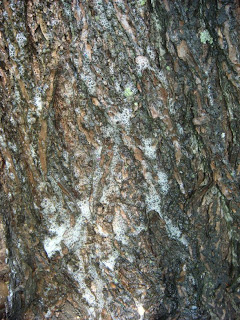Emerald Ash Borer in Vermont: Preventing the Spread and Removing Hazardous Trees in State Parks
PRESS RELEASE
For Immediate Release – May 24, 2023
Contact:
Josh
Halman, Forest Health Lead
Vermont
Department of Forests, Parks, and Recreation
802-279-9999,
josh.halman@vermont.gov
Emerald
Ash Borer in Vermont: Preventing the Spread and Removing Hazardous Trees
Montpelier, VT – In an effort to address
the threat posed by the invasive emerald ash borer (EAB), the Department of
Forests, Parks and Recreation urges both residents and visitors to stay
informed and follow recommendations. As part of the Emerald Ash Borer Awareness
Week, May 22 to May 28, 2023, Vermont renews its commitment to safeguarding its
ash tree population, while increasing public safety.
"We understand the importance of
ash trees to Vermont's forests, and the threat posed by the emerald ash borer
cannot be ignored," said Danielle Fitzko, Commissioner of the Department
of Forests, Parks, and Recreation. "We are taking proactive steps to
protect public safety and slow the spread of this invasive species. We urge the
public to do their part by following our recommendations."
The EAB begins its flight season on June
1, when they will emerge from infested ash trees,
logs, and firewood and seek new host trees and mates. To help slow
the spread of the EAB:
- Do not move firewood.
- Use local firewood.
- Report signs of
infestation to FPR.
Ash tree removal has been conducted at
Grand Isle State Park, Emerald Lake State Park, Lake St. Catherine State Park,
and Coolidge State Park. Some regular park visitors may notice a difference,
such as small branches and wood on the ground near sites, trails and roads,
more open areas, some soil disturbance, and newly seeded ground. Importantly,
these areas are now safer and can remain open as EAB continues to move through
the state.
Ash tree removal at Grand Isle State Park
Removing these trees improves forest
health and public safety; helps keep state parks and state forests accessible
to the public; and the harvested wood can be used for heating and lumber,
benefiting Vermonters and our local economy.
Background
The emerald ash borer is an invasive
species that has killed millions of ash trees in the United States since its
arrival in 2002 and poses a significant threat to Vermont's ash population. Ash
trees are important to Vermont's forests, providing valuable habitat and
economic benefits, and protecting public safety is essential in the face of
this invasive pest.
Thousands of ash trees across the
state's parks and forests pose a potential danger to buildings, people,
campsites, and high-use trails. Ash trees, once killed by the EAB, become
brittle, significantly increasing the risk, complexity, and cost associated
with their removal. As a result, many affected areas would have to be closed
until the dead and dying trees are safely eliminated. In an effort to avert
park and high-use area closures on state lands, FPR has embarked on a proactive
campaign to remove certain ash trees before and shortly after EAB infestation
occurs.
For more information on the EAB, report
signs, and the slow the spread recommendations, visit VTinvasives.org.
###
Read the full
press release.

.jpg)
.jpg)
Comments
Post a Comment
Feel free to let us know what you think.